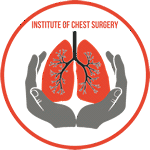Lung nodules are small, round, or oval-shaped growths that appear as spots on the lungs, often incidentally discovered during routine imaging tests. While the presence of lung nodules can be concerning, not all nodules are cancerous. In fact, the majority of lung nodules are benign (non-cancerous) and do not pose an immediate threat to health. However, it is essential to understand the available treatment options for benign lung nodules to ensure appropriate management and peace of mind. In this blog post, we will explore the various treatment approaches for benign lung nodules and shed light on when medical intervention may be necessary.
1. Monitoring and Observation
The management of benign lung nodules often begins with careful monitoring and observation. Most small and stable nodules found incidentally are considered low risk and may not require immediate treatment. In such cases, healthcare providers will recommend regular follow-up imaging, usually with chest X-rays or CT scans, to monitor the nodules for any changes in size or appearance over time.
During the monitoring period, it is essential for individuals to attend all scheduled follow-up appointments. Close observation helps healthcare professionals detect any concerning changes that may warrant further investigation or intervention.
2. Antibiotic Treatment for Infectious Nodules
Some benign lung nodules are caused by infections, such as fungal or bacterial infections. In these cases, appropriate antibiotic treatment may be prescribed to clear the infection and resolve the nodule. Once the infection is successfully treated, follow-up imaging will be performed to ensure the nodule resolves or stabilizes.
3. Biopsy and Histopathological Examination
When a lung nodule presents with atypical features or grows rapidly, a biopsy may be recommended to determine its nature definitively. A biopsy involves taking a small tissue sample from the nodule, either through a minimally invasive procedure (such as bronchoscopy or needle aspiration) or through surgical excision. The removed tissue is then sent for histopathological examination to identify the nodule’s characteristics and confirm its benign nature.
4. Minimally Invasive Treatments
For certain benign lung nodules that cause symptoms or significantly affect lung function, minimally invasive treatments may be considered. These treatments are often performed by interventional radiologists or pulmonologists and are aimed at targeting and shrinking the nodule without major surgery.
a. Radiofrequency Ablation (RFA)
RFA involves the use of high-frequency electrical currents to generate heat, which is directed at the nodule to destroy it. This procedure is usually guided by imaging techniques such as CT or ultrasound.
b. Cryoablation
Cryoablation involves freezing the nodule using extremely cold temperatures, causing the tissue to die. Like RFA, this procedure is guided by imaging to ensure precise targeting of the nodule.
5. Surgical Resection
In some cases, surgical resection may be necessary for benign lung nodules that continue to grow, cause symptoms, or have a suspicious appearance. Surgical removal of the nodule is typically performed through video-assisted thoracoscopic surgery (VATS) or, in more extensive cases, through open thoracotomy.
Surgical resection is considered when:
- The nodule is causing compression of nearby structures.
- There is uncertainty about the nodule’s nature even after biopsy.
- The nodule is at high risk of malignancy or has shown significant growth over time.
The surgical approach and extent of resection will depend on the size, location, and characteristics of the nodule. A pathologist will analyze the removed tissue to confirm its benign nature and to rule out any malignancy.
Conclusion
The treatment options for benign lung nodules vary based on factors such as size, appearance, growth rate, and symptoms. While many small and stable nodules may not require immediate treatment and can be safely monitored over time, others may need biopsy or minimally invasive procedures for further evaluation or management. In cases where surgical resection is deemed necessary, advances in surgical techniques allow for less invasive procedures and faster recovery times.
It is crucial to remember that the treatment plan for benign lung nodules should be individualized, and decisions should be made in consultation with qualified healthcare professionals. Regular follow-up and communication with your healthcare team are essential for effective monitoring and management of benign lung nodules, providing reassurance and promoting overall respiratory health.







